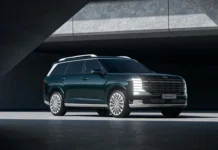
- The U.S. Treasury Department released new guidance covering how vehicles will qualify for the $7,500 EV tax credit under the Inflation Reduction Act (IRA) signed into law last year.
- Since January 2023, vehicles with final assembly in North America have qualified for the credit — but the criteria are changing in the next few weeks.
- EV buyers have just over two weeks until the new rules take effect on April 18, 2023.
- With the upcoming changes, some vehicles will lose their eligibility for part or all of the tax credit, thanks to the introduction of battery component and critical mineral sourcing requirements.
- The United States and Japan put together a free trade agreement Tuesday, adding the country as an eligible partner for the purpose of satisfying the two stipulations set out by the new rules.
If you’re shopping for a new EV, the tax credit rules are changing once again.
On Friday, the U.S. Treasury Department tightened the rules for new electric vehicles to qualify for the new $7,500 tax credit passed under the Inflation Reduction Act (IRA) last year. From the beginning of January through April 17, vehicles had to undergo final assembly in North America to qualify for the tax credit. The new rules, however, place stricter requirements to qualify, with a two-week grace period for current EV buyers to lock in the incentive before those rules take effect on April 18, 2023.
The two major pieces of the new rulemaking focus on sourcing for battery components and “critical minerals”, with the intent to wean automakers selling EVs in the U.S. off relying on China as the backbone of their supply chains to build new electric models.
“Today, Treasury is taking an important step that will help consumers save up to $7,500 on a new clean vehicle and hundreds of dollars per year on gas,” said Secretary of the Treasury Janet Yellen, “while creating American manufacturing jobs and strengthening our energy and national security.”
Moving forward, the two older pieces that were already in place remain in effect. EVs must still undergo final assembly in North America and not exceed the MSRP cap of $55,000 for passenger cars, or $80,000 for vans, pickup trucks and SUVs.

The new rules break the $7,500 into two pieces — the first being critical mineral sourcing
The $430 billion bill signed into law last August eliminated manufacturer caps, but introduced the new battery component and mineral sourcing rules now taking effect on April 18. To qualify for a $3,750 credit, 40% of “the applicable percentage of the value of the critical materials contained in the battery” must be extracted or processed in the United States or a country with which the U.S. has a free trade agreement. To that end, Japan and the U.S. signed a trade deal on EV battery materials, as Reuters points out in a recent piece.
Treasury’s guidance includes around 20 other countries, including Canada and Mexico as well as a range of Central and South American countries and a handful of Middle Eastern nations like Israel, Jordan and Oman. Some Asian countries also have free trade agreements with the U.S. for raw minerals used in EV batteries, including Japan, South Korea and Singapore.
Over the next five years, the amount of critical minerals an automaker must source from the countries listed in the rulemaking will increase by 10% each year. Beginning in 2027, they must source 80% of the value of the critical minerals used in each EV battery module within the confines of today’s guidance.
The second piece of the EV tax credit homes in on battery components outside the mineral content
For an automaker to secure the second $3,750 of the available tax credit, at least half the value of the battery components must be manufactured or assembled in North America, as of this year.
Like with mineral sourcing, the IRA ratchets up the amount of battery components that must meet that requirement. For 2024 and 2025, the percentage increases to 60%. It goes up by 10% annually over the next four years, until 100% of the value of the battery components must be made in North America from 2029 onward.
The Treasury Department did not immediately issue guidance on “Foreign Entities of Concern” — China being the major sticking point for lawmakers throughout the political spectrum. However, another provision set to start in 2024 says eligible EVs “may not contain any battery components that are manufactured by a foreign entity of concern”. In 2025, that provision expands again to include critical minerals that were extracted or processed by those same foreign entities.

Confused?
Jargon aside, buyers who want a more clear-cut answer as to whether the EV they want to buy can look view a comprehensive list on the EPA’s official fuel economy website, fueleconomy.gov.
The list of eligible vehicles will shift come April 18, and will knock certain vehicles out of the running for the full EV tax credit. Tesla, for its part, did confirm the entry-level Model 3 RWD would have its available tax credit reduced as a result of the new rules taking effect. The government should publish the revised list by the date the new guidance kicks in.
Relatively few EVs currently on the market will qualify for the full tax credit, until automakers can ramp up battery production capacity in North America and secure the necessary materials through their supply chains within the confines of the IRA. The North American final assembly requirement alone disqualified 70% of current EV models from receiving the $7,500 credit, as Alliance for Automotive Innovation CEO John Bozzella pointed out to Reuters. “Given the constraints of the legislation, Treasury’s done as well as it could to produce rules that meet the statute and reflect the current market.”























